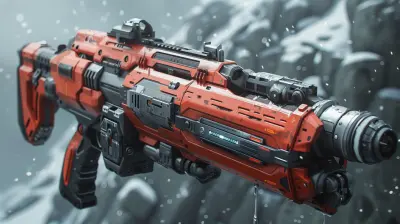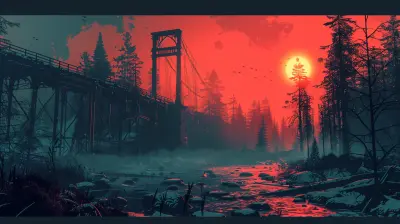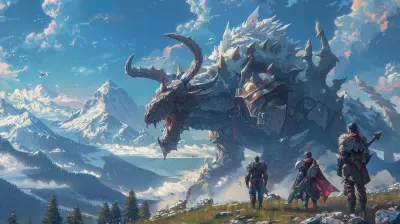Behind the Scenes: A Look at How Indie Games Are Made
24 November 2025
Ever wondered how those addictive, charming, and sometimes downright bizarre indie games come to life? You know, the ones that sneak up out of nowhere, steal your heart, and leave you thinking, “Wow… that was made by like, three people in a garage?” Well, buckle up, because we’re diving deep into the quirky, crazy, and inspiring world of indie game development.
Forget the glitz and glam of mega studios with movie-sized budgets and a small army of developers. Indie game development is all about passion, grit, and a whole lot of caffeine-fueled creativity. From scribbled notebook doodles to full-on playable magic, here's the not-so-glamorous but oh-so-interesting journey of how indie games are born.

What Even Is an Indie Game, Anyway?
Alright, let’s clear the air. “Indie” doesn’t just mean a game that's pixelated or has funky background music. Indie games are developed by individuals or small teams without the financial support of big-time publishers. Think of them as the musical garage bands of the gaming world—raw, authentic, and often brilliantly weird.And because they aren’t tied to massive corporations, indie developers can take risks. Want a rhythm-based goat combat simulator? Go for it. Feel like turning grocery shopping into a roguelike experience? Why not. Indie devs are the wild card artists of the gaming universe.
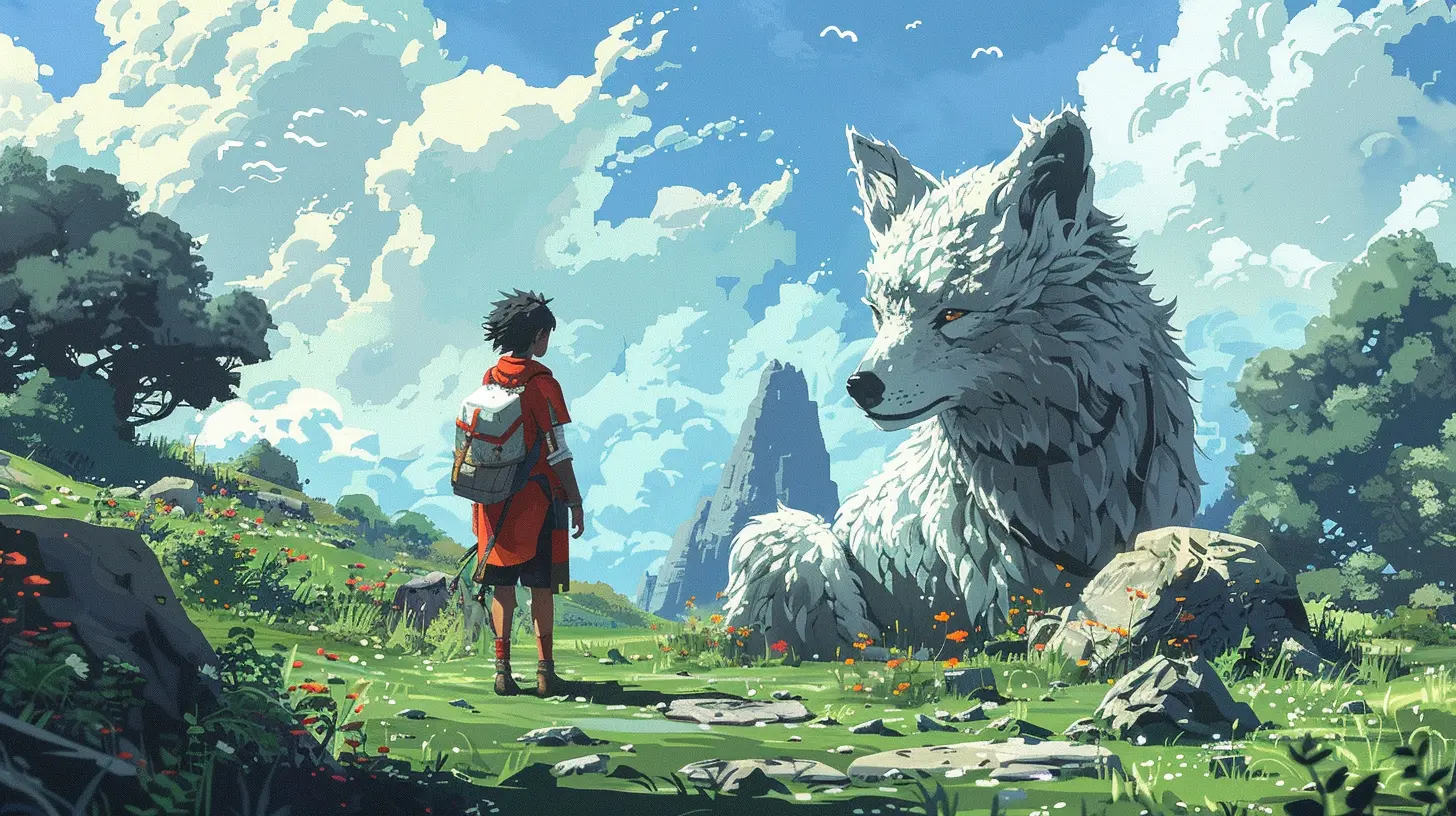
The Spark: Where Ideas Are Born
Indie game ideas can come from anywhere. A childhood memory. A weird dream. A pun that got way out of hand. That’s the beauty of going indie—creativity isn’t filtered through 15 layers of management.Most indie devs start with questions like:
- “Wouldn't it be cool if…?”
- “Why hasn't anyone made a game where you play as a broccoli fighting pizza ninjas?”
- “Can I turn my cat’s weird behavior into a game mechanic?”
The brainstorming phase can last anywhere from five minutes to five months. Often, there’s no grand business plan. It’s just someone with a crazy idea and a burning urge to bring it to life.
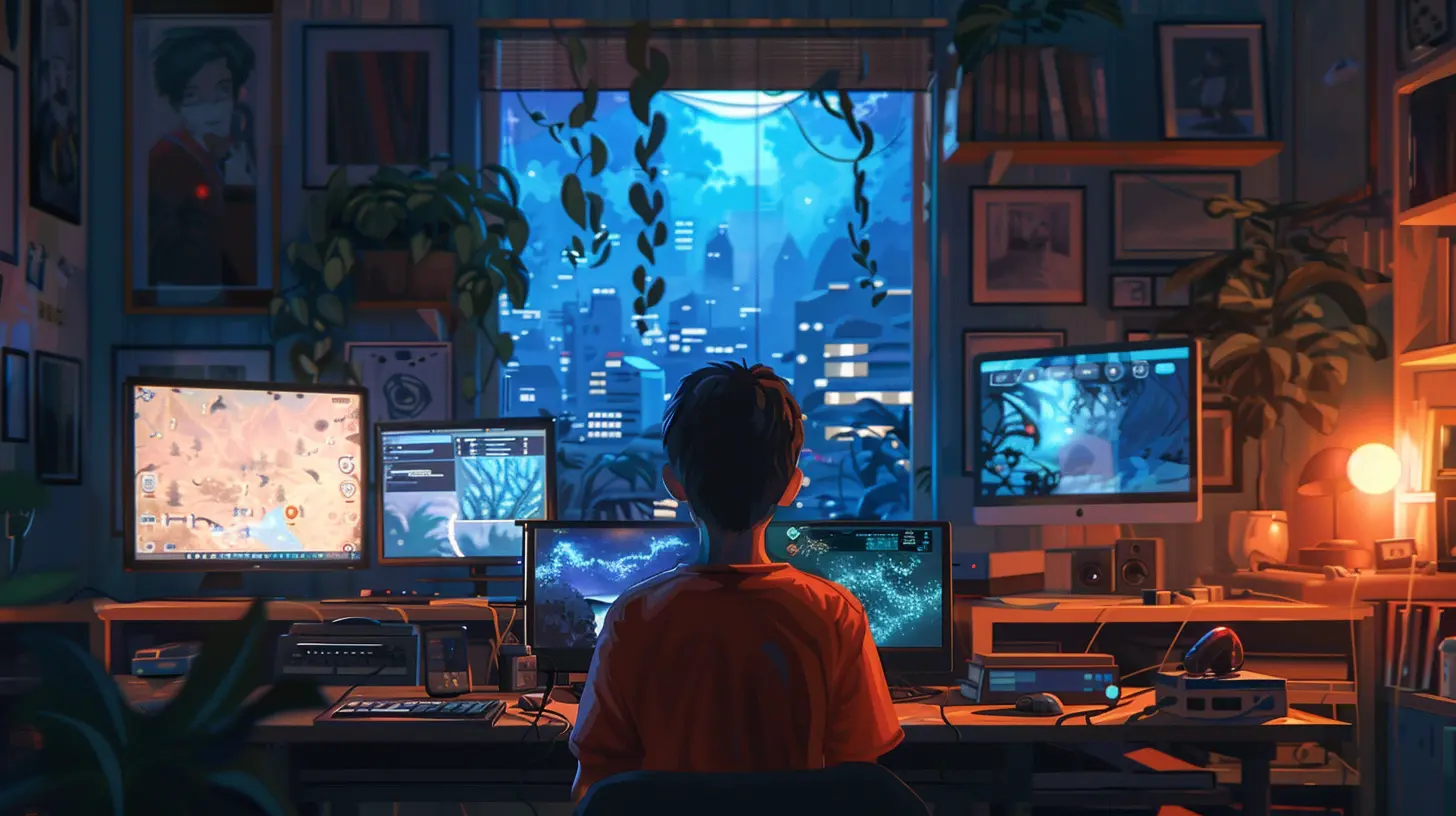
The Solo Dev Life (AKA Wearing All the Hats)
In big studios, different teams handle coding, writing, art, music, marketing—you name it. In indie land? One person might be doing all of that. By themselves.Yep. Many indie devs are the coders, artists, sound designers, writers, and unpaid therapists (to themselves... mostly). It's the equivalent of being a one-person band—playing the drums with your feet, guitar with your hands, and harmonica taped to your face.
Sure, it’s chaotic. But it’s also wildly empowering. Every pixel placed, every line of code written—it's a deeply personal expression. The game ends up being a reflection of the creator’s soul, quirks and all.

Tools of the Trade: The Secret Sauce
Let’s get a little nerdy, shall we? Unlike AAA developers with custom-built engines and fancy mocap studios, indie devs rely heavily on accessible software tools. Here are a few you’ll find in many indie arsenals:- Unity – A favorite for 2D and 3D projects alike. It’s like the Swiss Army knife of game engines.
- Unreal Engine – Beefy and beautiful, perfect for those looking to push visuals to the limit.
- Godot – The rising star of open-source game engines—lightweight and flexible.
- GameMaker Studio – Legendary in the 2D world, especially for platformers.
- Aseprite – Pixel artists' best friend. It’s like MS Paint if it went to art school.
- Audacity – For homemade sound effects and voiceovers (often recorded in closets for that “studio” feel)
Sometimes, the tools are chosen simply because they’re free or cheap. But indie devs have a knack for turning limits into strengths. It’s like watching someone make a five-course meal with just a campfire and a spoon.
Prototyping: The "Is This Even Fun?" Phase
So you’ve got your concept. You’ve chosen your tools. Now comes the test—trying to make that idea actually fun.This is where prototyping comes in. It’s all about creating a rough version of the game, testing core mechanics, and asking the most critical question in game design:
> Is this fun, or does it make me want to throw my keyboard into a lake?
Prototyping can be quick and dirty. We're talking stick figures, placeholder sounds, and menus that crash half the time. But it’s also where a lot of magic happens. Devs test ideas, break things, fix them, break them worse, fix them again—you get the idea.
The Grind: Development Begins
AKA: The part where time stops existing.This stage is less about inspiration and more about discipline. It’s the marathon after the sprint. Features are added, bugs are squashed, art is created, music is composed, and countless cups of coffee are consumed.
Don’t be fooled by the pixel art simplicity. Even “simple” games can take years. And remember, indie devs are often working on these games outside of full-time jobs, school, or in between freelance gigs. It’s a labor of love (and sometimes mild insanity).
Oh, and “crunch”? Yeah, that exists here too. Indie devs often self-impose brutal deadlines trying to stay relevant or hit milestones for funding. The difference? There’s no boss forcing it—it’s just pure passion driving the madness.
The Emotional Rollercoaster
Let’s be real for a sec—making an indie game can be wildly emotional.One day, you feel like a genius who just coded the next Minecraft. The next, you're questioning every life decision because your AI asparagus won’t stop walking into walls.
Expect highs, lows, and everything in between:
- Joy – That moment when the combat finally feels smooth.
- Frustration – When the build breaks for the 10th time in a row.
- Terror – Upon facing the almighty final boss: marketing.
- Elation – Seeing a stranger stream your game and genuinely enjoy it.
It’s not for the faint of heart. But, man, is it rewarding.
Marketing: The Monster Under the Bed
Ah yes, marketing. The word alone makes many indie devs break into a cold sweat. Because here’s the thing—you can make the most incredible game in the world, but if no one knows about it, what’s the point?Marketing is often the most overlooked part of indie development. Many devs are introverts who didn’t sign up to be content creators, social media managers, or PR reps.
But it’s a necessary evil. Whether it’s tweeting daily dev logs, making quirky TikToks, or emailing 500 streamers hoping someone bites, it's all part of the grind.
Pro tip? Start marketing early. Like, really early. Build a community, get wishlists on Steam, and ask for feedback often. People love rooting for the underdog—let them know you exist!
Playtesting: Let the (Friendly) Roasting Begin
So you’ve got a playable version. Now comes the nerve-wracking part—playtesting.This is where you hand your baby over to complete strangers and watch as they break it in ways you never imagined. Like somehow escaping the map or accidentally turning your main character into a glitchy noodle.
But it’s also invaluable.
You’ll get real feedback, spot confusing mechanics, and uncover bugs you never noticed. Plus, you’ll learn what genuinely clicks with players. Sometimes, what you thought was a minor feature becomes the game's main selling point.
Pro tip: Make it easy for players to give feedback. Google forms, simple surveys, and Discord chats go a long way.
The Final Stretch: QA, Polish, and Last-Minute Panic
This is the home stretch. Also known as “WHY IS THIS BUG STILL HAPPENING ONE DAY BEFORE RELEASE?!”The final phase before launch involves:
- Fixing bugs
- Polishing visuals
- Balancing gameplay
- Stressing over trailers
- Creating store pages
- Stressing some more
It’s exhausting but exhilarating. Everything comes together during this phase, and suddenly your rough prototype starts looking like a legit game.
Launch Day: The Big Moment
Pop the digital champagne! Your game is live!It’s an emotional cocktail of pride, relief, excitement, and pants-wetting fear. Will people buy it? Will they like it? Will anyone see it?
Some games go viral. Others grow slowly. And yeah, some launch to crickets. That’s the reality of the game dev world.
But no matter the outcome, shipping a game is a massive achievement. You created something from nothing. That’s incredibly rare—and incredibly cool.
Post-Launch: Updates, Feedback, and Moving On
The launch isn’t the end—it’s just a new beginning.Player feedback starts rolling in. Bugs you never saw are suddenly everywhere. Feature requests pour in like it’s a Kickstarter campaign (it's always a pet system, isn't it?).
Some devs patch and improve post-launch. Others start planning sequels or build entirely new games based on what they learned. Either way, the journey never really ends.
Being an indie developer is like living on a rollercoaster you built yourself… during an earthquake… while juggling flaming keyboards.
Why Indie Games Matter
Indie games bring something magical to the industry.They take risks. They get weird. They push boundaries. And often, they introduce mechanics and stories that big studios wouldn’t dare touch.
Some of the most influential games in recent years—Stardew Valley, Undertale, Celeste, Hollow Knight—started as tiny passion projects. And now they’ve changed the landscape.
So, next time you play an indie game, remember the blood, sweat, and endless debugging sessions that went into it. You're not just playing a game—you’re stepping inside someone’s dream.
all images in this post were generated using AI tools
Category:
Indie GamesAuthor:

Luke Baker
Discussion
rate this article
1 comments
Harrison Bowers
Love this peek behind the curtain! Indie games are where creativity shines—let's support these amazing creators! 🎮✨
November 24, 2025 at 5:52 AM
